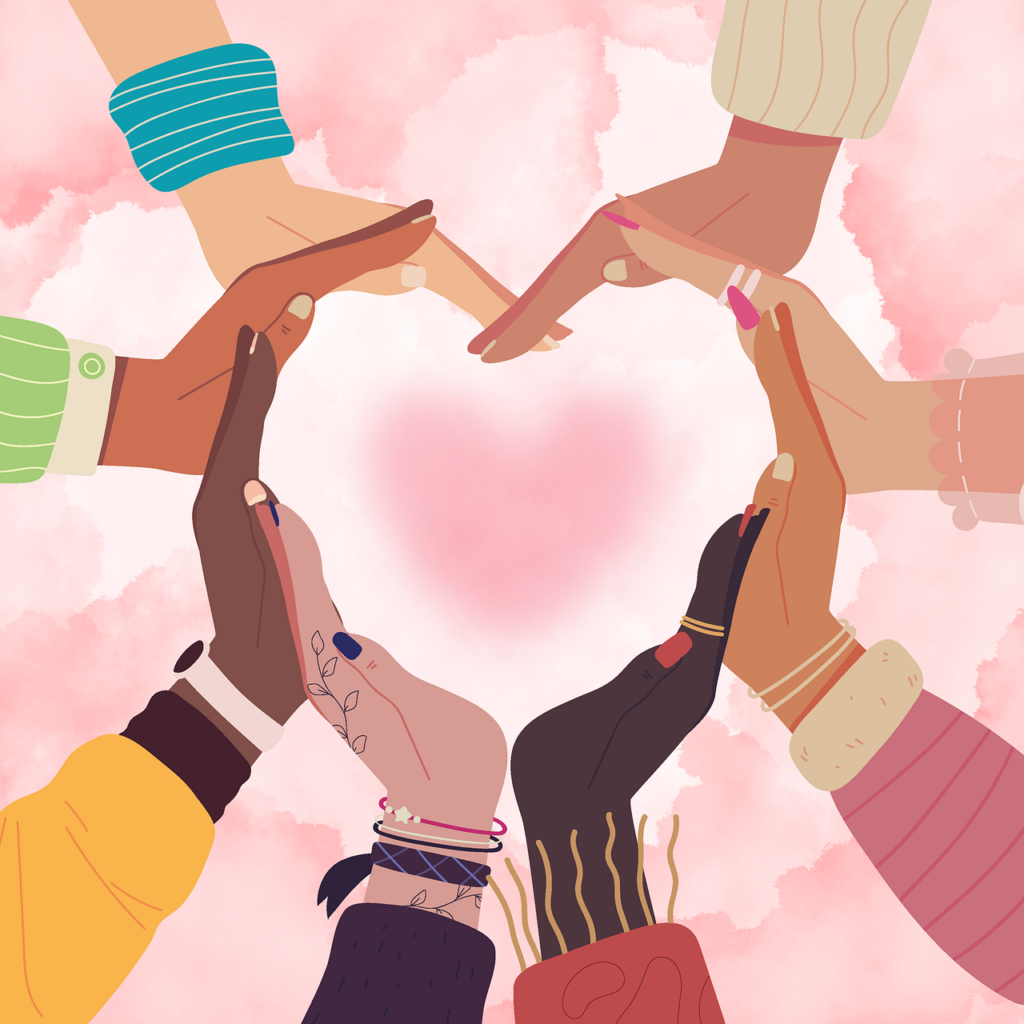In the bustling aisles of supermarkets and the endless scroll of online retail, a new form of philanthropy has taken root. It’s a phenomenon that’s as spontaneous as it is significant, and it’s changing the way we think about giving. A recent survey conducted by faculty at Binghamton University, State University of New York, has revealed that more than half of Americans – 53% to be precise – have embraced the act of impulse giving at checkout. This trend is not only reshaping the donor profile but also raising substantial funds for various causes. In 2022 alone, checkout charity campaigns amassed nearly $750 million, with prominent campaigns run by Walgreens, PetSmart, and eBay leading the charge. Yet, until now, the personal characteristics of these impromptu donors remained largely unexplored.

Lauren Dula, an assistant professor of public administration and policy at Binghamton University, along with Ruth Hansen from the University of Wisconsin-Whitewater, spearheaded a survey that delved into the habits of nearly 1,400 Americans. Their study aimed to illuminate who these donors are and how their giving patterns differ from traditional philanthropy. The survey asked respondents to recall if they had donated at a store checkout in the previous year and, if affirmative, to answer additional questions about their donation behavior, including the method of giving and their familiarity with the charity.
The results were telling. Those who donated at checkout did so by rounding up their purchase totals, adding a specific amount, or buying tokens for in-store display. On average, these donors contributed about $50 annually through these spontaneous acts of charity. The most common method was rounding up the total, followed by adding a set amount to their purchase. Purchasing tokens was less frequent but still a notable form of giving.
But who are these impulse givers? The survey uncovered that women and Black respondents were the most generous at checkout, with middle-class individuals under 50 who haven’t attended college also more inclined to donate. This is a stark contrast to the traditional donor profile of older, wealthier, college-educated individuals. The implications of these findings are profound, as they suggest a shift in the philanthropic landscape, with a younger, more diverse group of people engaging in charitable acts.
The study also raises questions about the sustainability of this giving model. Dula notes that the increasing frequency of donation requests could lead to donor fatigue, potentially resulting in a decline in contributions. As the research team looks to conduct a follow-up survey in a post-COVID context, they hope to gain deeper insights into the motivations behind impulse giving and the public’s perception of these donation requests.

The implications of this research extend beyond mere statistics. It offers a glimpse into the evolving nature of generosity, where the impulse to give can be as simple as a prompt at the checkout. It challenges the traditional donor model and highlights the potential for local charities to benefit from these campaigns. The study, ‘Who Will Spare a Dime? Impulse Giving Decisions at the Checkout,’ published in the Journal of Public and Nonprofit Affairs, is a testament to the changing face of charity and the power of the collective small contributions made at the register.
As we navigate the aisles of our favorite stores or click through the checkout process online, we are part of a larger narrative of giving. The checkout charity phenomenon is not just about the funds raised; it’s about the democratization of philanthropy, where everyone, regardless of their background, can contribute to the causes they care about. It’s a reminder that charity can be woven into the fabric of our everyday lives, one small donation at a time.
As we delve deeper into the demographics of generosity, it becomes clear that impulse giving at the checkout is not just a fleeting trend, but a reflection of a broader shift in societal norms and values. The survey conducted by Lauren Dula and Ruth Hansen offers a window into the hearts and minds of American consumers, revealing that younger, middle-class individuals who have not attended college are at the forefront of this philanthropic movement. This section will explore the characteristics of these donors, the implications of their giving patterns, and the potential future of checkout charity in a post-COVID world.
The survey results indicate that women and Black respondents are leading the charge in checkout charity, with their contributions outpacing those of other demographics. This finding is particularly noteworthy as it suggests a democratization of giving, where the act of charity is no longer confined to the traditional donor base of older, wealthier, college-educated individuals. Instead, it is the everyday shopper, often with limited disposable income, who is willing to add a little extra to their bill for a good cause.
Middle-class individuals under 50 represent a significant portion of impulse givers. This demographic’s participation is crucial as it reflects a shift in the culture of giving. These individuals are often balancing budgets and financial responsibilities, yet they still choose to contribute to charity. Their willingness to donate speaks volumes about the values of community support and social responsibility that resonate with this age group.
The methods of giving at checkout are varied, with rounding up the purchase total being the most popular. This simplicity of donation – the ease of just saying ‘yes’ to round up a few cents – removes barriers to giving and encourages participation. The act of rounding up is a small, almost negligible addition to a transaction, yet when multiplied by millions of transactions, it represents a substantial sum for charitable causes.
Adding a specific amount, such as $1 or $5, is another common method of giving at checkout. This option allows for a more significant contribution and may appeal to those who wish to donate a little more than just spare change. The purchase of tokens for in-store display, while less common, adds a visual element to the donation, creating a sense of community as customers see the collective support for a cause.

The average annual contribution of about $50 through impulse giving may seem modest, but it is a testament to the power of collective action. When many individuals each contribute a small amount, the cumulative effect can be transformative for charities and the communities they serve.
However, the sustainability of this giving model is a concern. The increasing frequency of donation requests at checkout could lead to donor fatigue. As Dula points out, the novelty of impulse giving may wear off, and the reflexive ‘yes’ could turn into a habitual ‘no thanks.’ This potential decline in contributions underscores the need for retailers and charities to strike a balance between making donation requests and respecting customers’ desire not to be overwhelmed by appeals.
Looking to the future, Dula and her team are seeking to re-run their survey in a post-COVID context. The original study was conducted at a time when many were still avoiding in-person shopping, which may have impacted the frequency of donation requests and the overall experience of giving at checkout. A follow-up study could provide further insights into how the pandemic has affected impulse giving and whether the patterns observed in 2021 persist or evolve.
The researchers are also interested in exploring the motivations behind impulse giving. Understanding why individuals choose to donate in this way can help retailers and charities tailor their campaigns more effectively. It can also shed light on the psychological and emotional triggers that lead to spontaneous acts of charity.
The potential for checkout charity campaigns to support local organizations is another area of interest. While national charities with strong brand recognition can raise significant funds, there is an opportunity for smaller, local charities to benefit from these campaigns. By raising the profile of these organizations, checkout charity can have a direct impact on the communities where donors live and shop.
The phenomenon of impulse giving at checkout is a reflection of a changing philanthropic landscape. It is a movement driven by a diverse and younger donor base, characterized by small but meaningful contributions. As we continue to navigate the complexities of a post-COVID world, the future of checkout charity remains an open question. Will it continue to grow and evolve, or will donor fatigue set in? Only time will tell, but one thing is certain: the impulse to give is a powerful force, and when harnessed effectively, it has the potential to make a significant impact on society.
Related posts:
More than half of Americans give to charity at checkout, survey shows
Checkout Charity: Unveiling the Demographics of Impulse Giving
Amid ‘Checkout Charity’ Boom, Some Americans Are More Likely to Be Impulse Givers Than Others



